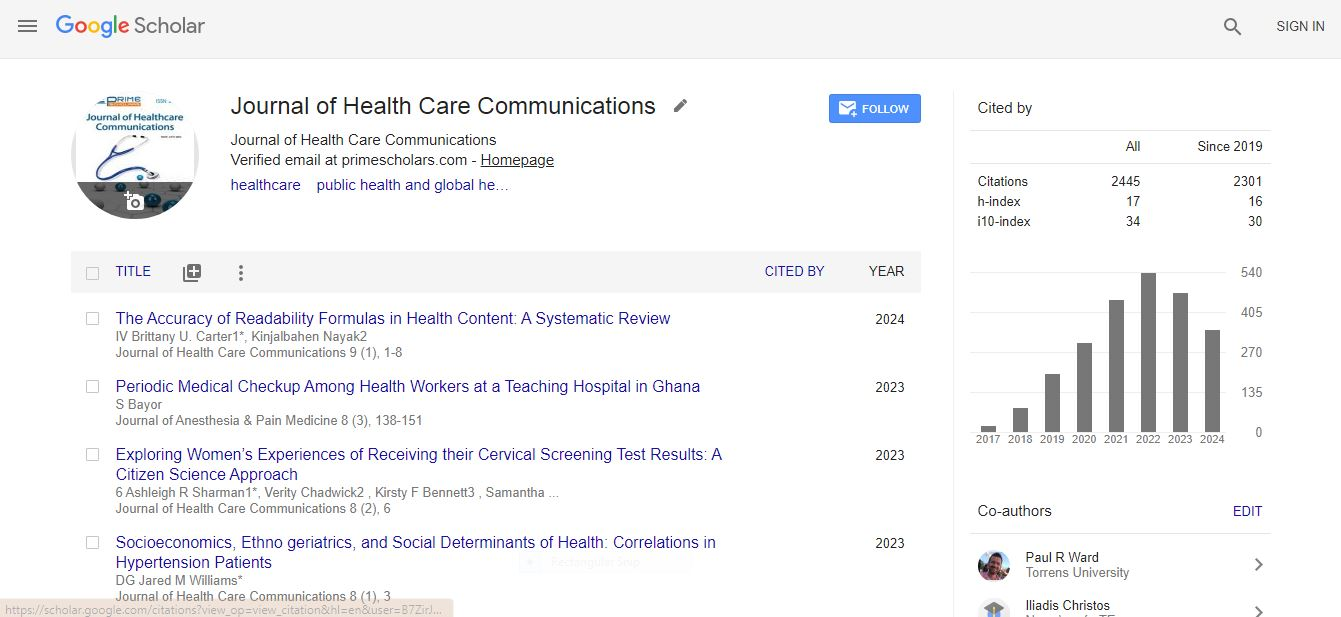Commentary - (2024) Volume 9, Issue 6
Health Information Management: The Backbone of Modern Healthcare
Priya Sharma*
Department of Medical Communication, Stirling University, UK
*Correspondence:
Priya Sharma,
Department of Medical Communication, Stirling University,
UK,
Email:
Received: 02-Dec-2024, Manuscript No. IPJHCC-25-22471;
Editor assigned: 04-Dec-2024, Pre QC No. IPJHCC-25-22471 (PQ);
Reviewed: 18-Dec-2024, QC No. IPJHCC-25-22471;
Revised: 23-Dec-2024, Manuscript No. IPJHCC-25-22471 (R);
Published:
30-Dec-2024, DOI: 10.36846/2472-1654-9.6.53
Description
Health Information Management (HIM) is a crucial field that
combines healthcare, information technology, and business
to ensure the accurate and secure handling of patient data.
With the rapid advancement of digital technologies, HIM has
become an indispensable component of modern healthcare
systems, enabling efficient patient care, improved medical
decision-making, and regulatory compliance. At its core,
HIM involves the collection, storage, analysis, and protection
of health information. Traditionally, patient records were
maintained in paper format, but with the advent of electronic
health records, the landscape has significantly transformed.
EHRs allow healthcare providers to access patient information
in real time, leading to better coordination and continuity
of care. Additionally, digital records help in reducing errors,
minimizing paperwork, and enhancing workflow efficiency.
One of the primary roles of HIM professionals is to ensure
data integrity, confidentiality, and accessibility. Patient data
must be accurate, complete, and up to date to support clinical
decisions and medical research. Furthermore, protecting
patient information from unauthorized access is paramount,
necessitating strict adherence to privacy regulations such
as the Health Insurance Portability and Accountability Act
(HIPAA) in the United States and the General Data Protection
Regulation (GDPR) in the European Union. These regulations
set guidelines for how health data should be collected, stored,
and shared, ensuring patient confidentiality and security.
HIM also plays a vital role in healthcare analytics. The vast
amount of health data collected can be analyzed to identify
trends, improve patient outcomes, and enhance public health
initiatives. Another critical aspect of HIM is medical coding
and billing. HIM professionals assign standardized codes to
diagnoses and procedures, facilitating accurate billing and
insurance claims processing. Proper coding ensures healthcare
providers receive appropriate reimbursement for their services
and reduces the likelihood of claim denials. Cloud computing
enables seamless access to health data, improving collaboration
among healthcare providers while maintaining data security
and compliance. The demand for HIM professionals is on
the rise, driven by the expansion of digital health initiatives
and regulatory requirements. These professionals play a
crucial role in maintaining the efficiency and effectiveness of
healthcare delivery, ultimately improving patient outcomes and
reducing healthcare costs. In conclusion, Health Information
Management is an integral part of the modern healthcare
system, ensuring the secure and efficient handling of medical
data. By leveraging technology and adhering to strict regulatory
guidelines, HIM enhances patient care, supports medical
research, and streamlines administrative processes. As the field
continues to grow and adapt to technological advancements,
HIM will remain at the forefront of transforming healthcare
delivery and improving global health outcomes.
Acknowledgement
None.
Conflict Of Interest
The author declares there is no conflict of interest.
Citation: Sharma P (2024) Health Information Management: The Backbone of Modern Healthcare. J Health Commun. 9:53.
Copyright: © 2024 Sharma P. This is an open-access article distributed under the terms of the Creative Commons Attribution License, which permits unrestricted use, distribution, and reproduction in any medium, provided the original author and source are credited.

